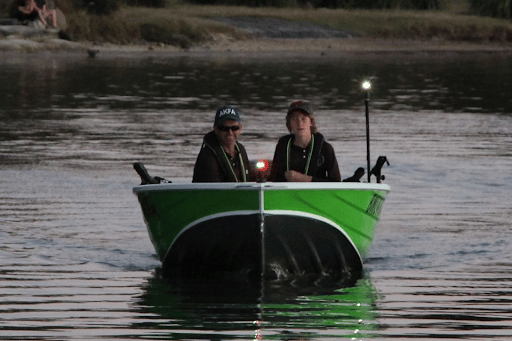Navigation Lights
 Navigation lights are required if a vessel is operated between sunset and sunrise or in periods of restricted visibility. These lights ensure that the vessel is visible from all sides after dark or in poor visibility (fog or rain).
Navigation lights are required if a vessel is operated between sunset and sunrise or in periods of restricted visibility. These lights ensure that the vessel is visible from all sides after dark or in poor visibility (fog or rain).
The colour and location of navigation lights displayed by a vessel vary depending on the size of the vessel, whether it is sail-driven or power-driven, and whether it is underway or at anchor.
Navigation lights also help vessels that are converging on crossing courses to determine which has the right of way. Lights must be plainly visible at different distances, depending on the length of the vessel (refer to Rule 22 in the Collision Regulations for more details).
Since light configurations differ between power-driven vessels and sailboats, navigation lights can help you to determine if the vessel you are meeting is under power, under sail, or at anchor. This information, combined with the colours of the lights that you see, will help you determine if you should stand on or give way.
Ensure your lights are always in good working order. Always test your vessel’s lights before heading out on the water. Carry spare bulbs on board as a bulb could burn out at any time.

